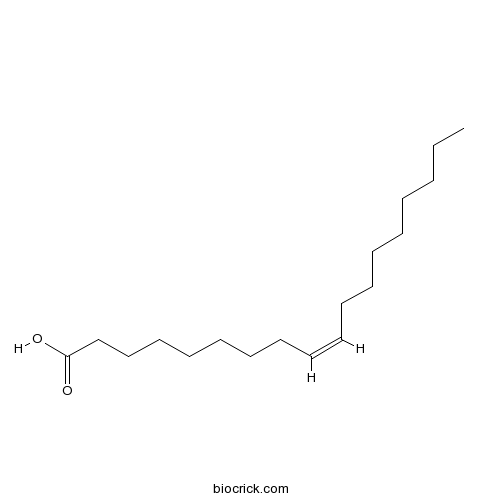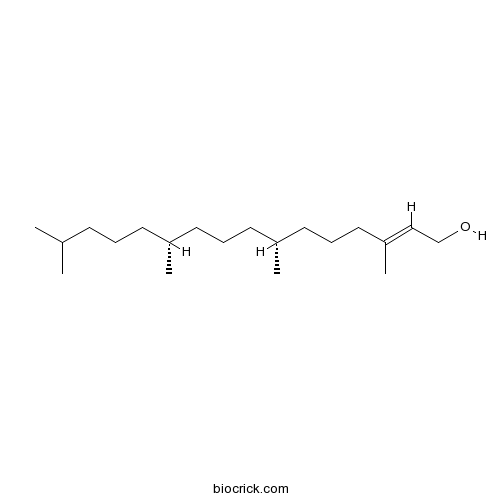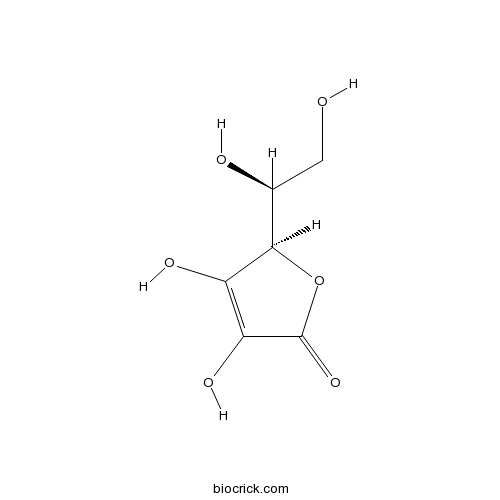Moringa oleifera
Moringa oleifera
1. The products in our compound library are selected from thousands of unique natural products; 2. It has the characteristics of diverse structure, diverse sources and wide coverage of activities; 3. Provide information on the activity of products from major journals, patents and research reports around the world, providing theoretical direction and research basis for further research and screening; 4. Free combination according to the type, source, target and disease of natural product; 5. The compound powder is placed in a covered tube and then discharged into a 10 x 10 cryostat; 6. Transport in ice pack or dry ice pack. Please store it at -20 °C as soon as possible after receiving the product, and use it as soon as possible after opening.
Natural products/compounds from Moringa oleifera
- Cat.No. Product Name CAS Number COA
-
BCN7159
Oleic acid112-80-1
Instructions

-
BCN1673
Phytol150-86-7
Instructions

-
BCN2207
Ascorbic acid50-81-7
Instructions

-
BCN4450
Neochlorogenic acid906-33-2
Instructions

[Preparation optimization of extract of Moringa oleifera leaves and its immune regulation effect on immunosuppressed mice].[Pubmed: 30111019]
With total flavonoid content and dry extract yield as the observation indexes, the optimal extraction conditions of Moringa oleifera leaves were determined by using single factor test and orthogonal test, and cyclophosphamide modeling method was used to establish immunosuppressed mice models, so as to investigate the effects of M. oleifera leaves extract on immune regulation in mice. The results showed that the optimal preparation conditions were as follows: extraction with 70% ethanol, material-liquid ratio 1:15, extraction temperature 80 °C, three times, 1.5 hours for each time. Under these conditions, the content of total flavonoids from M. oleifera leaves was 15.64 mg·g⁻¹, which can significantly enhance macrophage phagocytosis and immune organ index, promote the synthesis of serum immunoglobulin IgG and hemolysin, and decrease AST activity, with regulation effect on immune dysfunction.
Antibacterial action of functional silicon dioxide: An investigation of the attachment and separation of bacteria.[Pubmed: 30102131]
Bactericidal proteins from the Moringa oleifera seed are reported to be suitable alternatives to conventional methods of bacterial reduction in water.In this study the cationic bactericidal M. oleiferaproteinswereisolated by attachment onto the surface of silicon dioxide. This functionalised SiO₂(ƒ-SiO₂) was then exposed toEscherichia coli and Micrococcus luteus to examine whether the ƒ-SiO₂ could be used to inactivate the bacteria. The effect of the non-ionic surfactant dodecyl glucoside on the attachment of these bacteria to the ƒ-SiO₂ was examined with the aim of developing a method of reusable bacterial inactivation. The primary result of this study was that the E. coli could be readily separated from the ƒ-SiO₂,allowing the ƒ-SiO₂ to be used for further bacterial inactivation.The regeneration of the ƒ-SiO₂was demonstrated using fluorescence microscopy on bacterial cells stained with propidium iodide, and zeta potential measurements. Future applications of this work include a reusable method of removing bacteria from contaminated water.
Moringa oleifera Ameliorates Histomorphological Changes Associated with Cuprizone Neurotoxicity in the Hippocampal Cornu ammonis (CA) 3 Region.[Pubmed: 30091739]
Cuprizone-induced neurotoxicity has severally been used to study demyelinating diseases like multiple sclerosis(MS), adversely affecting both the white and grey matters of the brain. Lesions have been observed in different regions ofthe brain including, corpus callosum, neocortex and the hippocampal formation. The current study explored the role ofMoringa oleifera leaf extract in restoring the resultant histomorphological changes in cuprizone-induced hippocampaldamage in Wistar rats. Twenty adult female Wistar rats with average weight of 163.74 ± 3.59 g were grouped into A: Control,administered with 1 ml of normal saline, B: received 0.4% cuprizone diet, C: received 1.875 mg/ml/day of Moringa extract,and D: received a combination of cuprizone and Moringa in similar doses. Administration was oral for 5 weeks. The weightsof animals were assessed during treatment, and at the termination of experiment, the rats were euthanized and the brainswere fixed in 4% paraformaldehyde. The tissue was processed for histological and histochemical examinations using theHaematoxylin and Eosin stain and cresyl fast violet stain to assess the general microarchitecture and neuronal cellsrespectively of hippocampal cornu ammonis (CA) 3 region. The body weight of cuprizone-treated rats was reduced and thiswas ameliorated significantly in animals that were co-administered with Moringa. Similarly, there were histologicalalterations in the CA3 region of the hippocampus with the presence of pyknotic pyramidal cells organized in clusters andCA3 cells with degenerative changes, but administration of Moringa led to a better organised and fairly intact histologicalappearance. Pharmaceutical development of Moringa oleifera into appropriate therapeutic formulations could offer somerelief to patients of demyelinating conditions that have clinical features of neurological deficits.
Mathematical modeling applied to the rate-limiting mass transfer step determination of a herbicide biosorption onto fixed bed columns.[Pubmed: 30084313]
The herbicide removal Diuron in a fixed-bed column packed with the Moringa oleifera bark biosorbent was investigated experimentally and through phenomenological mathematical modeling. To understand the physical phenomena involved, the steps of external mass transfer resistance, internal mass transfer resistance and the adsorption phenomenon itself were considered as possible limiting steps in the herbicide mass transfer from the liquid to the solid phase. In the developing process of the internal mass transfer resistance model, two hypotheses were considered: constant mass transfer coefficient and mass transfer coefficient as a function of the herbicide concentration in the biosorbent. The experimental breakthrough curves were obtained for different flow rates and feed concentrations, in order to evaluate the models predictive capacity. The mass transfer parameters values of the mathematical models were estimated using the simplex downhill optimization method. The model that considers the resistance a mass transfer internal with parameter Ks variable represented effectively the dynamic behavior of the herbicide biosorption process in fixed-bed column, in the various evaluated conditions, indicating that this mechanism controls the biosorption process. Thus, the phenomenological mathematical modeling proved to be an analysis important tool, understanding and the herbicide adsorption systems design in a fixed-bed column.
Moringa oleifera stem extract protect skin keratinocytes against oxidative stress injury by enhancement of antioxidant defense systems and activation of PPARα.[Pubmed: 30077837]
None
Antimicrobial Potential of Fungal Endophytes from Moringa oleifera.[Pubmed: 30039472]
The present study was aimed to isolate the endophytic fungi having antimicrobial potential from Moringa oleifera. Out of the active isolates, the endophytic fungal isolate DSE 17 obtained from the bark of the plant was selected for further studies and identified as Aspergillus fumigatus. The classical method for optimization strategy revealed inoculum size of four discs in Czapek dox's medium at a temperature of 25 °C and pH 7 with the incubation period of 6 days to be the best. Sucrose as carbon source (1%) and sodium nitrate as nitrogen source (0.2%) were found to be the best for antimicrobial activity. Response surface methodology was effective in optimizing the selected medium components in Plackett-Burman design, i.e. magnesium sulphate, dipotassium phosphate and sodium nitrate, which resulted in increase in antimicrobial activity by 1.7-fold. Chloroform was found to be the best extractant amongst different solvents. The minimum inhibitory concentration (MIC) values of the chloroformic extract ranged from 0.05 to 0.5 mg/ml, and the viable cell count studies revealed it to be bactericidal in its nature. The post-antibiotic effect (PAE) of the chloroformic extracts ranged from 2 to 20 h. Ames mutagenicity testing and MTT assay revealed the crude extract neither cytotoxic nor mutagenic, thus showing it to be biosafe. Thus, the study suggests that endophytes from this miracle plant could be potential source for the production of broad-spectrum antimicrobial compound/s.


